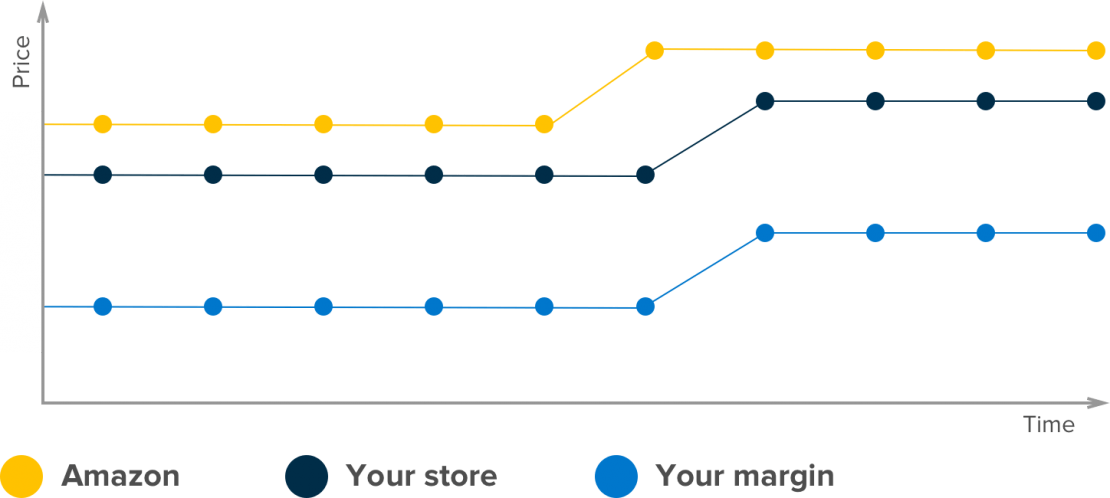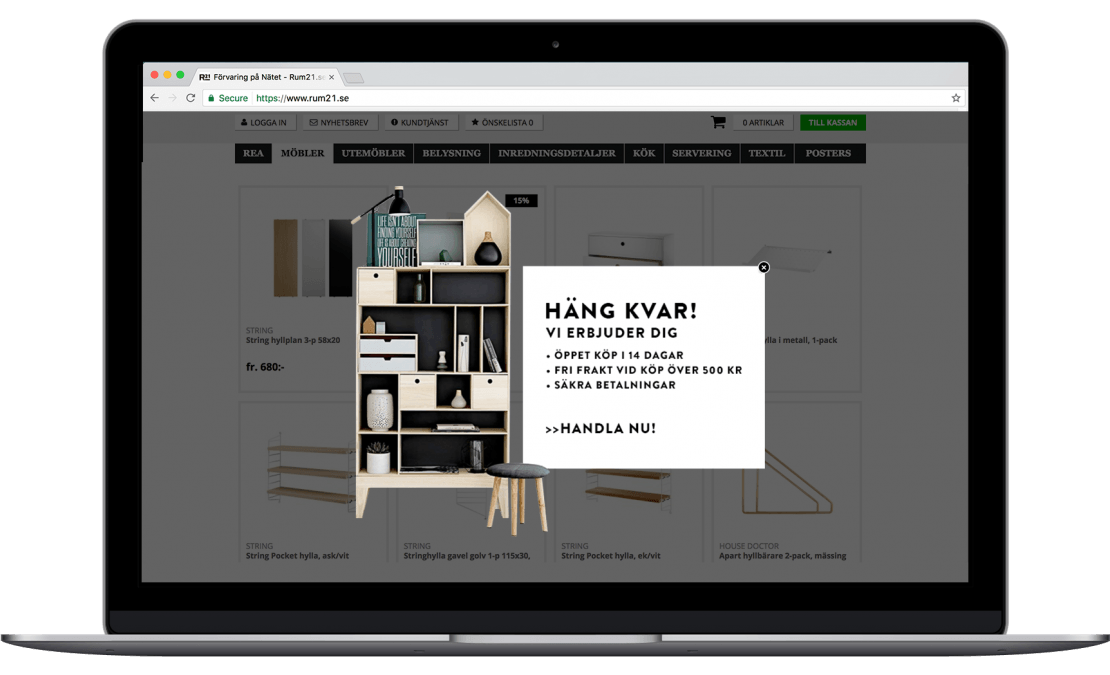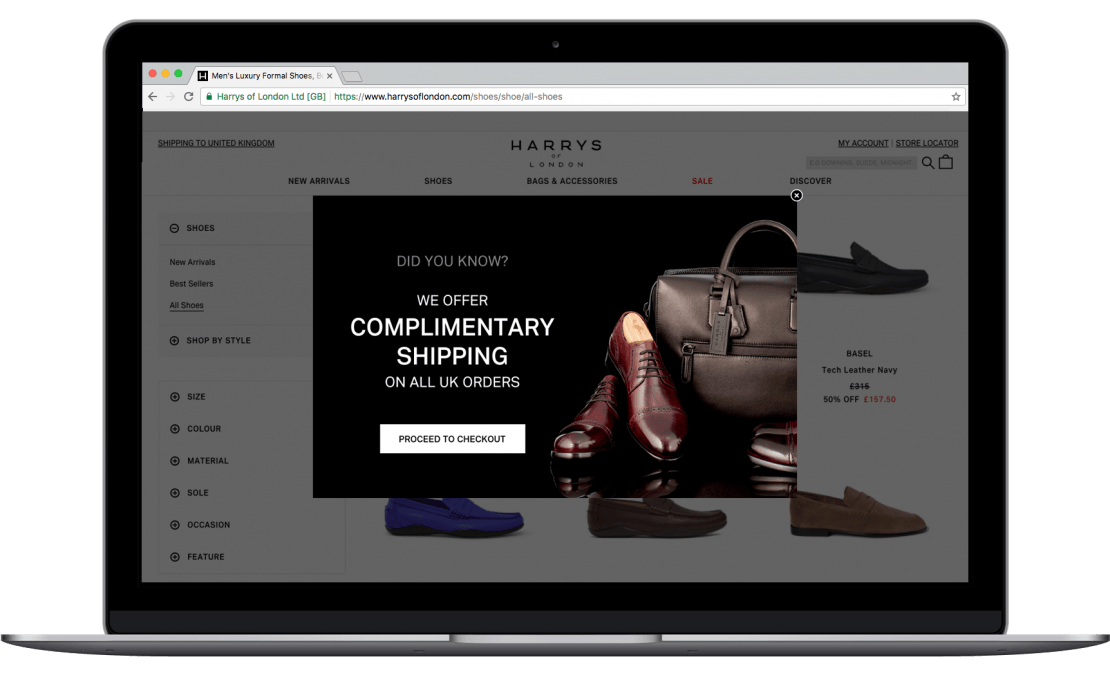EBOOK
Launching a New Product
Published: Jun 21, 2017
Introduction
Congratulations, you’ve got a great new product (or a whole range of them) to bring to your e-commerce store. Now all you have to do is make it sell.
In this e-book, you’ll learn a product launch formula to ensure the effort and budget you put into traffic converts into product sales.
After all, if you start turning on your PPC and PR taps straight away without getting your site right you’ll be driving traffic straight into a leaky bucket. Most e-commerce sites lose around 97% of their traffic to abandonment – with a new product launch, here’s your opportunity to turn that around.
1. Be smart about pricing
Although price is widely accepted as one of many aspects consumers consider when making a purchasing decision, it’s nonetheless a primary purchase influencer. Pricing products correctly is therefore fundamental; go too high, and you could lose customers and sales, price too low and there go your potential profits. Executing the right pricing strategy is a combination of tracking competitor activity and understanding your costs.
Know your margin options
If your pricing strategy is driven to maximize margins on each product sold while remaining competitive in your marketplace, consider using an SFTP location to host data on product costs. From this location, you can use a price monitoring agent to calculate and present margin options compared to the cheapest price for that product in your marketplace. This ensures you make the best pricing decisions based on visual and real-time data.

Track the competition
So you’ve set your product price with a sound understanding of your costs and desired profit margin, but how do your prices compare against your competitors? Use a price distribution chart and see how your pricing compares to each of your identified competitors:

When tracking competition, don’t stop your research at today’s numbers. Get access to a price history chart for each product you offer – this provides daily, monthly and annual historical intelligence on competitor prices for the same or similar products, giving deep insight on competitor pricing, product descriptions and product review changes.
These give you the ability to review your pricing position across key competitors and use this data to make the best pricing decisions that drive you towards achieving your pricing objectives.
2. Positioning is everything
It’s more important than ever to really know your customer. As competition increases, making your customer journey feel tailored and unique is key to getting visitors into – and through – the checkout funnel. Don’t take another step in following this formula until your work here is done.
Think about who your customer is
Smart segmentation is your starting point; it doesn’t have to be complex, but dividing your customer base so that you can target them effectively will determine your strategy across different channels. Determine your priority segments, how you’d differentiate your message to each one and what channels and approaches will be most effective to engage them…

Map out customer journeys
When you have your segments, map out what each stage of the journey should look like for each one as they discover your product and are encouraged to purchase. You can then add in your marketing touchpoints to ensure that your customers move through this journey smoothly – for example, using on-site messaging to send relevant messages to guide them to the next stage of purchase.
Be personalized in all channels
As you start to execute, ensure all your marketing is tailored to the customer segment you’re targeting. Have you used email marketing to reach out to visitors yet to make a purchase? Are your return customers seeing loyalty incentives on your site? When you’re more personal with your communication, you also increase your chance of cross-selling and upselling.
3. Product descriptions are key
The battle for consumer attention has never been fiercer. Any text or visuals included in your product description should be focused on driving your desired consumer action.
Use your segments
Reach back to your initial positioning to make sure your product description is articulating the customer’s needs and how your product meets them.
Track your competitors
Just as important is being able to track and monitor how your competitors’ communicate the exact same products you sell both visually and verbally. Consider setting up keyword trackers that alert you to keywords of interest being used by your competitors as part of their product description.
Optimize for SEO
E-commerce sites are notoriously bad when it comes to optimising for SEO; maximize your visibility by ensuring your product description is backed up by strong keyword research (check out a handy primer here).
A picture says a thousand words
OK, so it’s not technically the product description, but the right product image(s) can be the difference between making and losing a sale from today’s visually-driven consumer. Consider monitoring product images and title description as part of your competitor monitoring initiatives.

4. Content is not an optional extra
In an increasing competitive market, how do you stand out when launching a new product? To acquire and retain customers, you need more than just promotions – you need content that enriches your customer’s experience of browsing and purchasing.
Create pre-launch content
Create content that teases the launch of the product, with talking points that make your product relevant to your audience (if you can’t find any – make them yourself!).
Where pictures are great, videos are better
96% of shoppers find video useful when shopping online – that’s very nearly everyone. Here’s a short guide from BigCommerce on making a great product video.
Ensure your content is easily shared
Make sure that your content has social share buttons that make it easy for your customer. With 62% of shoppers more likely to purchase if recommended by a friend via social media and 51% of millennials being open to purchasing an item seen on social media, consider extending your social reach through partnerships with key bloggers or influencers.
Optimize everything
Whatever you create, ensure that it’s as effective and discoverable as it is creative – never lose sight of SEO optimization and ensure that your landing pages are visual and powerful, but also optimized for conversion.
5. Choose your promotion wisely
Running promotions and offers is a tried-and-tested tactic to drive sales, increase customer engagement and loyalty, but knowing what promotional offers to push and when to push it is where intelligent retailers could gain a real advantage.
Spy on what your competition is doing
Tracking competitor offers and promotions can provide strategic and timely opportunities to better engage consumers and influence on their purchase decisions. For example, getting an alert for promotional banners or in-page price drops that appear on competitor websites in real-time provides you with a timely opportunity to develop and execute your own promotions strategy, supported by intelligence on offers they’re promoting and how these offers are presented.
Offers are great, but discounting is not always the most profitable way of ensuring conversion. Here are some other non-discounting ideas that you can try to sell your product without taking a hit to your margins:
Offer free delivery
Look at the numbers and this becomes a bit of a no-brainer: 9 out of 10 shoppers say that this is the top incentive for them to shop more online. At Yieldify, we’ve found that highlighting free delivery policies to visitors can deliver a 40% conversion uplift from those who would have otherwise abandoned. Check out how luxury brand Harrys of London did it:

Showcase your value propositions
Highlight free delivery, key product benefits or even loyalty schemes in real-time using notifications and overlays relevant to your visitor’s journey.
Create a feeling of urgency
If you’re delivering an offer, consider making it ‘for a limited time’ to encourage visitors to race to checkout.
Cross-sell your products
Promote your new product to customers who are buying related items as part of bundled purchases or complementary offers.
Use social proof
Highlight how many have previously looked at an item or have recently purchased it, or even use trust signals and reviews from third parties. This increases the sense of potential scarcity and urgency that can help drive a conversion, but also help generate trust in your store’s security.
6. Streamline the purchase funnel
Congratulations, you’ve nearly made it – your customer has engaged with your product and dropped it into the basket. Now for the final furlong and the last step of your product launch formula – getting them to successfully check out.
Narrow the funnel
Offering a visitor too many options or offers as they proceed towards checkout can end up confusing or annoying your customers – once you’ve engaged your visitor with your product, keep it simple to make their path to purchase clear and easy.
Use clear and concise notifications
For example, flagging your visitor’s eligibility for free shipping.
Make checkout as easy as possible
14% of shoppers abandon their basket due to lack of a guest checkout. Highlight your guest checkouts for those making a quick purchase as customers often shop in the spare moments they have in the day – 23% of online shoppers make a purchase in the office!
Build trust
74% of online shoppers are concerned about the security of their information. Use reassuring notices and trust signals to inform the visitor of the security of your site to encourage that final push through to purchase.
Key learnings
That’s all, folks – we’ll leave the traffic-generating to someone else while we focus on making sure that your store itself is ready to convert those hard-won visitors into customers.
To recap, as you get your new goods ready to hit the digital shelves, make sure you’re covering off the following product launch formula:
- Pricing is a research game; know your margins and know what your competitors are up to, tracking trends over time and making sure you’re getting alerts to stay up-to-date for changes
- Segment and conquer; defining your target audience, their needs and how your product meets them forms the backbone of the rest of your marketing strategy – do not pass ‘go’ without this step
- Product descriptions are vital; this isn’t just about matching needs to solutions, but about optimizing for SEO along the way
- Get busy with content; great video, great photography and anything else that delivers not only interest in your product but adds perceived value to it is increasingly crucial to make your offer competitive online
- Be smart with promotions; you have many, many more options besides discounting. Keep an eye on what your competitors are up to, but test out what other things can convince your visitor to purchase besides offering money off
- Make the conversion funnel speedy; understand every hurdle your visitor might encounter on their way to clicking ‘Confirm order’ and remove them.